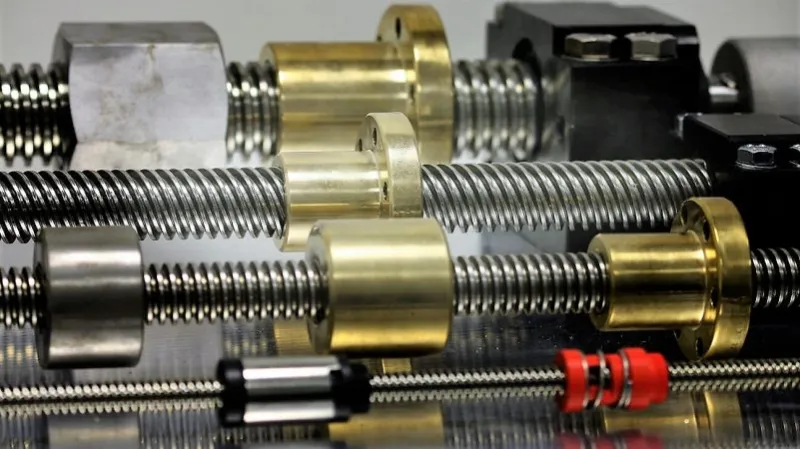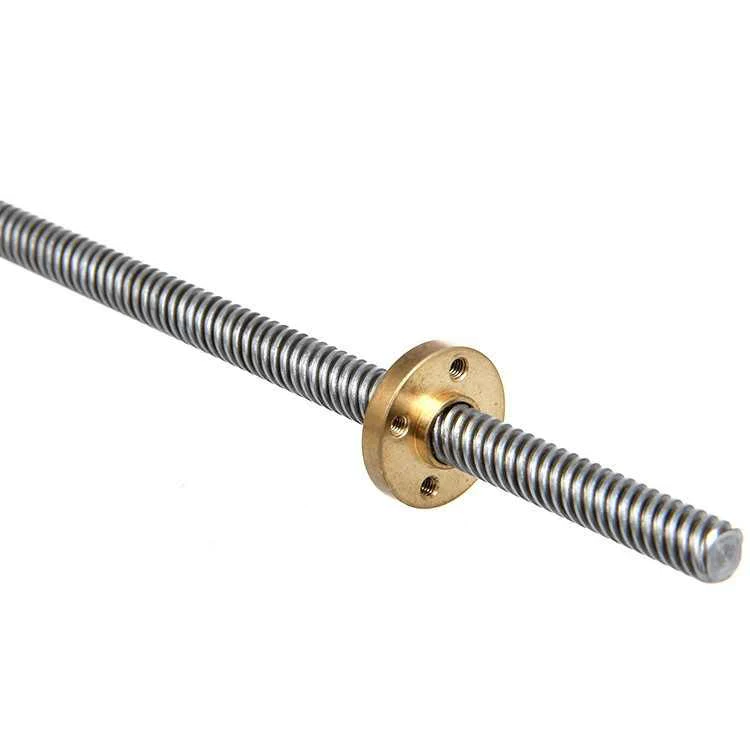Product Description
MODEL COLLECTIOIN 2
TK8 TK10 TK12 TK16 TK20 TK25 TK30 TK40 TK50 TK12-OP TK16-OP TK20-OP TK25-OP TK30-OP TK40-OP TK50-OP
TW3 TW4 TW6 TW8 TW10 TW12 TW16 TW20 TW24 TW32 TW8-OP TW10-OP TW12-OP TW16-OP TW20-OP TW24-OP TW32-OP TMF16 TMF20 TM25
TKA8UU TKA10UU TKA12UU TKA16UU TKA20UU TKA25UU TKA30UU TKA40UU TKA50UU TKA8WUU TKA10WUU TKA12WUU TKA16WUU TKA20WUU TKA25WUU TKA30WUU TKA40WUU
TKE12UU TKE16UU TKE20UU TKE25UU TKE30UU TKE40UU TKE50UU TKE12WUU TKE16WUU TKE20WUU TKE25WUU TKE30WUU TKE40WUU
TKD12UU TKD16UU TKD20UU TKD25UU TKD30UU TKD40UU TKD50UU TKD12WUU TKD16WUU TKD20WUU TKD25WUU TKD30WUU TKD40WUU
TMF16CUU TMF20CUU TMF25CUU TMA20CUU TMA25CUU
TWA4UU TWA6UU TWA8UU TWA10UU TWA12UU TWA16UU TWA20UU TWA24UU TWA32UU TWA4WUU TWA6WUU TWA8WUU TWA10WUU TWA12WUU TWA16WUU TWA20WUU TWA24WUU
TWJ4UU TWJ6UU TWJ8UU TWJ12UU TWJ16UU TWJ20UU TWJ24UU TWJ32UU TWJ4WUU TWJ6WUU TWJ8WUU TWJ10WUU TWJ12WUU TWJ16WUU TWJ20WUU TWJ24WUU TWJ32WUU
TWD8UU TWD10UU TWD12UU TWD16UU TWD20UU TWD24UU TWD32UU TWD8WUU TWD10WUU TWD12WUU TWD16WUU TWD20WUU TWD24WUU
SSP4 SSP6 SSP8 SSP10 SSP4.4AM SSP5AM SSP6.6AM SSP8.8AM SSP10.10AM SSP13A SSP16A SSP20A SSP25A SSP30A SSP40A SSP50A SSP60A SSP80 SSP80L SSP100 SSP100L SSP20 SSP25 SSP30 SSP40 SSP50 SSP60 SSP4AM SSP5AM SSP6AM SSP8AM SSP10AM
FP6 FP8 FP10 LP6 LP8 LP10
SSPS4 SSPS6 SSPS8 SSPS10 SSPS13A SSPS16A SSPS20A SSPS25A SSPS20 SSPS25 SSPS4AM SSPS5AM SSPS6AM SSPS8AM SSPS10AM
SSPM6 SSPM8 SSPM10
SSPF6 SSPF8 SSPF10 SSPF13A SSPF16A SSPF20A SSPF25A SSPF30A SSPF40A SSPF50A SSPF60A SSPFS6 SSPFS8 SSPFS10 SSPFS13A SSPFS16A SSPFS20A SSPFS25A SSPFS20 SSPFS25
SSPT6 SSPT8 SSPT10 SSPT4AM SSPK5AM SSPK6AM SSPK8AM SSPK10AM SSPTS4AM SSPKS5AM SSPKS6AM SSPKS8AM SSPKS10AM
SPR6 SPR8 SPR10 SPR13 SPR16 SPR20A SPR25A SPR30A SPR40A SPR50A SPR60A SPR20 SPR25 SPR30 SPR40 SPR50 SPR60
SPB6KP SPB8KP SPB10KP SPB13KP SPB16KP.16 SPB20KP.20 SPB25KP.25 SPB16 SPB20 SPB25
SPLFS6 SPLFS8 SPLFS10 SPLFS13 SPLFS16 SPBR16 SPBR20 SPBR25 SPBF16 SPBF20 SPBF25
OUR PROMISES
Product quality standards are guaranteed. Our products have got ISO 9001 & CE international quality management system. They all produced with best advanced technology.We are proactive and we offer only products complying with top standards of quality and warranty
.
/* January 22, 2571 19:08:37 */!function(){function s(e,r){var a,o={};try{e&&e.split(“,”).forEach(function(e,t){e&&(a=e.match(/(.*?):(.*)$/))&&1
| Rolling Body: | Roller Bearings |
|---|---|
| The Number of Rows: | Multi-column |
| Outer Dimension: | Small (28-55mm) |
| Material: | Bearing Steel |
| Spherical: | Non-Aligning Bearings |
| Load Direction: | Radial Bearing |
| Samples: |
US$ 1/Piece
1 Piece(Min.Order) | |
|---|
| Customization: |
Available
|
|
|---|

Can you provide examples of products or machinery that use lead screws for precise positioning?
Lead screws are widely utilized in various products and machinery that require precise positioning. Here are some examples of products and machinery that commonly use lead screws for precise positioning:
- CNC Machines: Computer numerical control (CNC) machines, including CNC mills, lathes, and routers, use lead screws to precisely position the cutting tools or workpieces. Lead screws enable accurate and repeatable movement in the linear motion systems of these machines, allowing for precise machining operations.
- 3D Printers: Lead screws are extensively used in 3D printers to control the movement of the print head or build platform. They enable precise positioning of the print head, ensuring accurate layer-by-layer deposition of the printing material, resulting in high-quality 3D prints.
- Robotics: Lead screws are integral to robotic systems that require precise positioning. They are used in robotic arms to control the movement and positioning of the end effectors or grippers. Lead screws provide accurate and controlled linear motion in robot joints, allowing for precise and coordinated movements in industrial, medical, and research robotics.
- Medical Imaging Systems: Lead screws are employed in medical imaging systems, such as computed tomography (CT) scanners and magnetic resonance imaging (MRI) machines, to precisely position the patient bed or gantry. This precise positioning is crucial for accurate imaging and diagnosis.
- Laboratory Automation Equipment: Lead screws are used in laboratory automation equipment, such as liquid handling robots and sample handling systems, for precise positioning and movement of samples, reagents, and labware. They ensure accurate and repeatable positioning required for various laboratory processes.
- Semiconductor Manufacturing Equipment: Lead screws are utilized in semiconductor manufacturing equipment, including wafer handling systems and lithography machines. They provide precise positioning and movement of wafers, masks, and other components critical for semiconductor fabrication processes.
- Camera Sliders: Lead screws are employed in camera sliders used in photography and videography applications. They enable smooth and precise linear motion of the camera along the slider, allowing for controlled tracking shots and precise camera positioning.
- Telescopes and Astronomy Equipment: Lead screws are utilized in telescopes and other astronomy equipment to precisely position optical components and achieve accurate tracking of celestial objects. They enable fine adjustments and precise pointing of telescopes for astronomical observations.
- Industrial Inspection Systems: Lead screws are used in industrial inspection systems, such as coordinate measuring machines (CMMs) and optical inspection systems, for precise movement and positioning of the inspection probes or cameras. This ensures accurate measurement and inspection of manufactured components.
These are just a few examples of the products and machinery that utilize lead screws for precise positioning. The versatility, accuracy, and reliability of lead screws make them a preferred choice in applications that require controlled linear motion and precise positioning of components.

What are the signs that indicate a need for lead screw replacement or maintenance, and how can they be diagnosed?
Lead screws, like any mechanical component, may require replacement or maintenance over time due to wear, damage, or performance degradation. Recognizing the signs of potential issues and diagnosing them accurately is essential for timely intervention. Here are some common signs that indicate a need for lead screw replacement or maintenance, along with diagnostic methods:
- Increased Backlash: An increase in backlash, which is the clearance or play between the lead screw and nut, can signify wear or mechanical issues. Excessive backlash can result in decreased accuracy and precision. Diagnosis: Backlash can be measured using specialized tools, such as dial indicators or laser displacement sensors. Comparing the current backlash with the manufacturer’s specifications can help determine if maintenance or replacement is necessary.
- Unusual Noise or Vibration: Unusual noises, vibrations, or excessive mechanical resonance during operation can indicate misalignment, worn components, or inadequate lubrication. Diagnosis: Careful observation and listening during operation can help identify abnormal noise or vibration. Inspecting the lead screw for signs of wear, checking alignment, and ensuring proper lubrication can help diagnose the underlying issue.
- Reduced Accuracy or Repeatability: If a lead screw system starts exhibiting decreased accuracy or repeatability in positioning, it may indicate wear, misalignment, or damaged components. Diagnosis: Conducting precision tests or comparing the system’s actual position with the desired position can help identify any inconsistencies. Inspecting the lead screw, nut, or associated components for signs of wear or damage can provide further insights.
- Increased Friction or Sticking: If the lead screw system experiences increased friction or sticking during operation, it may indicate inadequate lubrication, contamination, or worn components. Diagnosis: Observing the smoothness of the lead screw’s movement and checking for signs of lubrication deficiency or contamination can help diagnose the issue. Cleaning the lead screw and applying appropriate lubrication may resolve minor friction-related problems.
- Visible Wear or Damage: Visual inspection of the lead screw and nut may reveal signs of wear, corrosion, or physical damage. This can include worn threads, scoring, pitting, or deformation. Diagnosis: Regular visual inspection of the lead screw system is important to identify visible signs of wear or damage. If significant wear or damage is observed, replacement or repair may be necessary.
- Inconsistent or Jerky Movement: If the lead screw system exhibits inconsistent or jerky movement instead of smooth and controlled motion, it may indicate misalignment, binding, or damaged components. Diagnosis: Careful observation of the system’s movement, checking for misalignment, and inspecting the lead screw, nut, or associated bearings for signs of binding or damage can help diagnose the issue.
It’s important to note that proper diagnosis and decision-making regarding lead screw replacement or maintenance may require the expertise of qualified technicians or engineers familiar with the specific application and system requirements. Following manufacturer guidelines, maintenance schedules, and seeking professional assistance can help ensure accurate diagnosis and appropriate actions to maintain or replace the lead screw when necessary.

Are there specific advantages to using lead screws over other linear motion systems?
Yes, there are specific advantages to using lead screws over other linear motion systems. Here are some of the advantages associated with lead screws:
- Precision and Accuracy: Lead screws offer precise and accurate linear motion control. The thread design and pitch allow for precise positioning and movement of components, making them suitable for applications that require high levels of accuracy and repeatability.
- Cost-Effectiveness: Lead screws are often more cost-effective compared to other linear motion systems, such as ball screws or linear actuators. They provide a reliable and efficient solution for converting rotary motion into linear motion at a relatively lower cost, making them a popular choice for many applications.
- High Load Capacity: Lead screws are capable of handling significant axial loads and torque. The thread engagement between the screw and nut distributes the load over a larger surface area, allowing lead screws to support and transfer substantial loads. This makes them suitable for applications that require heavy-duty performance and load-carrying capabilities.
- Self-Locking: Lead screws have a self-locking characteristic, which means they can hold their position without the need for additional locking mechanisms. The friction between the mating threads helps prevent back-driving and maintains the position of the load, providing stability and safety in applications where holding the position is critical.
- Simple Design and Installation: Lead screws have a relatively simple design, consisting of a screw and a nut. This simplicity makes them easier to install and maintain compared to more complex linear motion systems. Additionally, the straightforward design allows for customization and modification to meet specific application requirements.
- Efficiency: Lead screws can achieve high mechanical efficiency in converting rotary motion to linear motion. The efficiency depends on factors such as the thread design, lubrication, and preload. With proper design and lubrication, lead screws can operate with minimal friction and energy loss, ensuring efficient power transmission.
- Versatility: Lead screws can be used in a wide range of applications across various industries. They are suitable for applications that require linear motion, precise positioning, or adjustment of components. Lead screws find applications in industries such as manufacturing, automation, robotics, aerospace, medical, and more.
These advantages make lead screws a popular choice in many applications where precise linear motion control, cost-effectiveness, high load capacity, and simplicity are essential. However, it’s important to consider specific application requirements and factors such as speed, accuracy, duty cycle, and environmental conditions when selecting the appropriate linear motion system.


editor by CX 2024-03-15